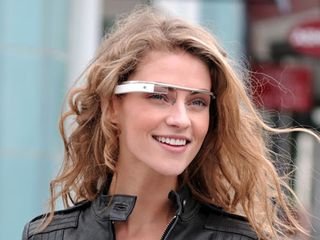Google CEO Confirms that Glass Runs on Android
It's official: Google Glass is based on Android.

We kinda saw this one coming: Google Glass is based on Android. Company CEO Larry Page made the revelation during Google's 1Q13 earnings call on Thursday.
Towards the end of the call (1:08), Page responded to a question about the amount of "incremental engagement" Google will see over the next several years regarding the company's products and new form factors like Glass. The questioner also asked how transportable Android will be across these new form factors.
"Obviously Glass runs on Android," Page said. "So [Android] has been pretty transportable across devices, and I think that will continue."
Prior to that, he addressed the "incremental engagement" aspect of the question, and even mentioned "watches and things". He acknowledged that computers are a big part of everyone's life, and it's increasing as they grow more and more useful. Because we only have twenty-four hours in a day, the usefulness of the consumer's engagement will increase.
Prior to the earnings call, it was unknown what was powering the Google Glass hardware. Google hadn't mentioned a thing, and it was presumed to be Android. But recent reports suggested otherwise, that Google chose to create a proprietary platform separate from Android instead. That doesn't make any sense from a business and compatibility standpoint, but whatever.
Although Glass isn't capable of launching complex apps, having the face-mounted tech running the same base platform used on millions of smartphones and tablets is undoubtedly good news for Android/Glass developers to some degree. But as pointed out by CNET, Glass still has its own separate API (application programming interface) called Mirror, meaning developers won't simply create Android apps that take advantage of the Glass hardware.
Google released the specs list for Glass earlier this week, revealing a 5MP camera capable of shooting 720p video. Other features include a bone conduction transducer for pumping audio into the wearer's ear, Wireless G and Bluetooth connectivity, 12 GB of internal storage (16 GB total), and a high-resolution screen that's the equivalent of a 25-inch high definition screen from eight feet away.
Stay on the Cutting Edge
Join the experts who read Tom's Hardware for the inside track on enthusiast PC tech news — and have for over 25 years. We'll send breaking news and in-depth reviews of CPUs, GPUs, AI, maker hardware and more straight to your inbox.
The specs are currently landing in the hands of those who bought into the company's Explorer program for a hefty $1500 USD (you'd think it would have Wireless N for that price). The consumer version isn’t expected to launch until the end of 2013 or possibly into 1Q14, depending on how the Explorer program goes.
So, with all that said, what version of Android does Glass use? The Myglass companion app for smartphones requires Android 4.0.3 "Ice Cream Sandwich" or higher, so maybe it's a version of that at least (pure speculation). However Glass will work with any Bluetooth-capable phone, according to Google.
-
utroz Google and everyone else know that sexiness sell products, hence the nice blonde modeling Google Glass. Apple does the same thing with its products and we all know how much they sell. I am highly interested to see just how well Google Glass will work, it could be a game changer especially if you can wirelessly connect to say a tablet or pc for game play and other things like content creation in a 3D environment but guessing from the fact it only has wireless G it might not be capable of that till they make the next generation or so. That would be sweet if it happen.Reply -
Gundam288 My only question is: Can we load our own OS onto it? I'm kinda expecting someone to make a Terminator like OS and load it onto Glass. That would be epic.Reply -
palladin9479 Guys there is something more. Will Google create an API that allows other devices to interact with glass and exchange data? What I mean is like your car or cell phone. The car could inject sensor and gauge data into glass for a HUD like effect. Cars are also appearing with front facing collision detected radar systems that check for objects approaching the vehicle. That telemetry information could be displayed on your HUD and allow you to spot things that otherwise you might not see. Just imagine the wealth of sensor information available all around you that's just not feasible to display on small screens but that could easily be presented over a transparent HUD.Reply -
builder4 The equivalent of a 25 inch screen from 8 feet away? That's actually pretty small. The Project Glass videos on Youtube imply it fills your field of view: https://www.youtube.com/watch?v=9c6W4CCU9M4Reply -
InvalidError Reply
Imagine the amount of real-world first-hand observations you may miss from being distracted/obstructed by your HUD. Cars have dashboards that already display all essential data and audio+visible warnings for some of the more critical stuff.10700204 said:That telemetry information could be displayed on your HUD and allow you to spot things that otherwise you might not see. Just imagine the wealth of sensor information available all around you that's just not feasible to display
Having all that stuff duplicated on a HUD may sound neat but I bet many people would suffer from sensory overload from having so much unnecessary information duplication spamming their field of view.
Most Popular






